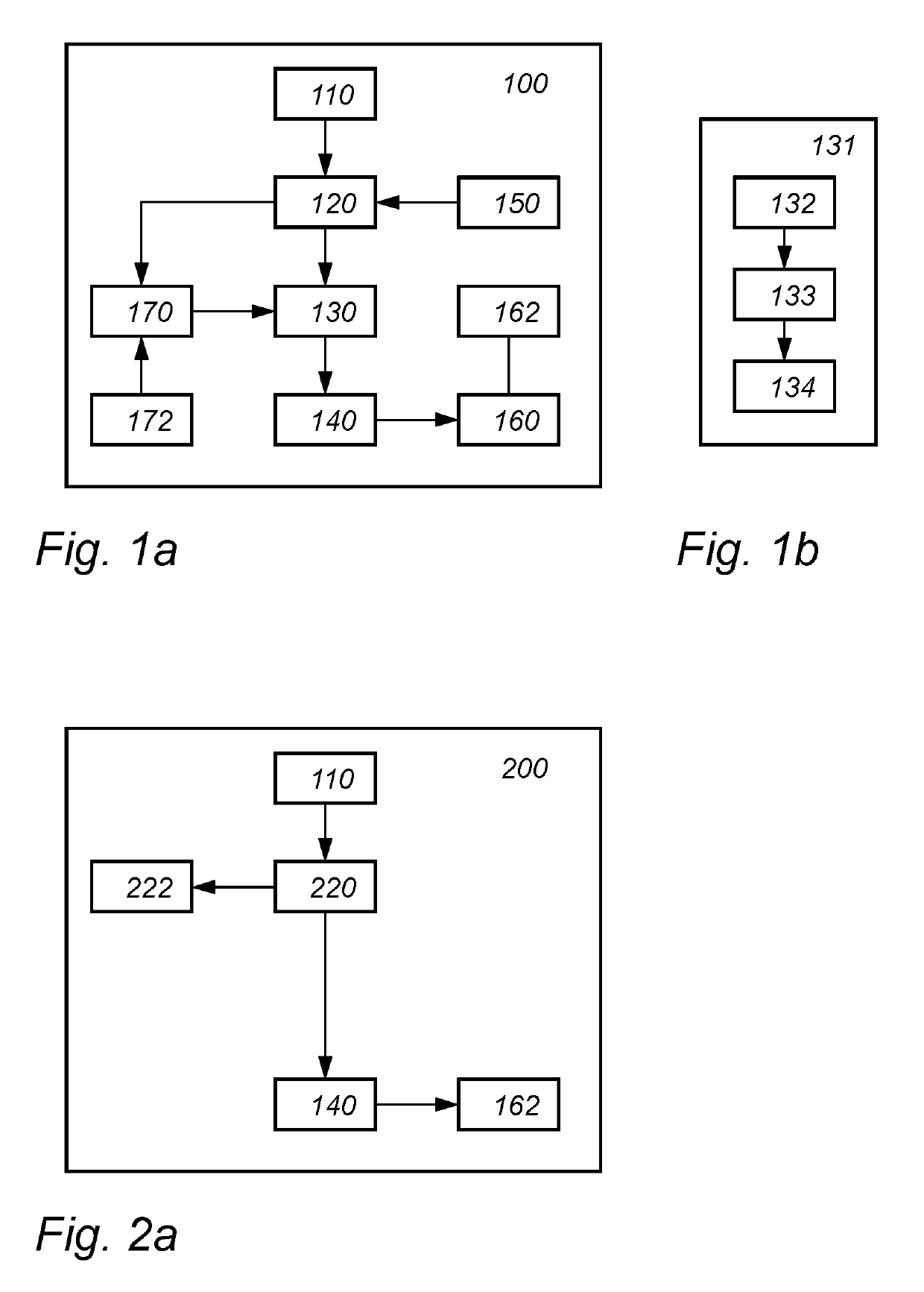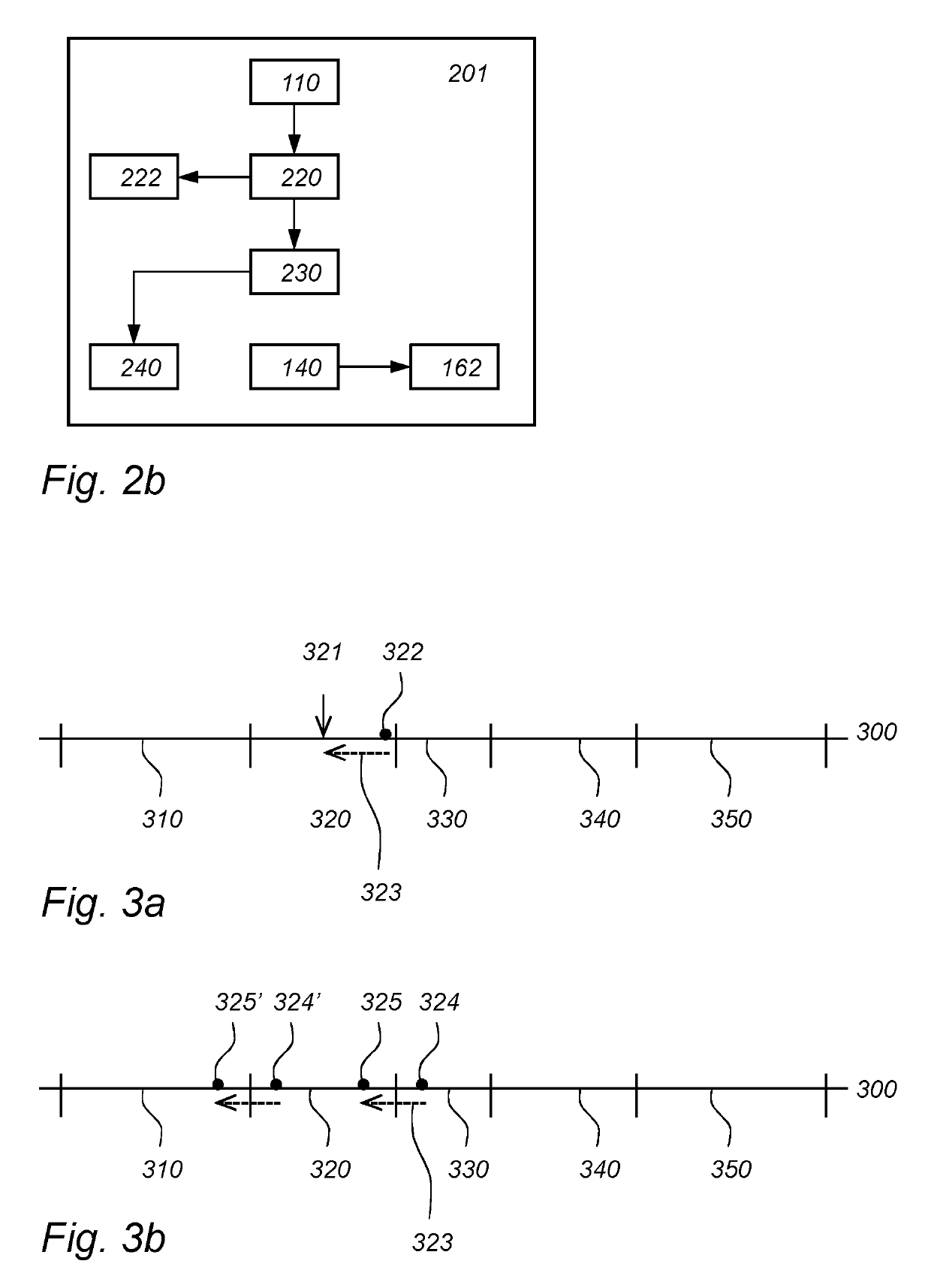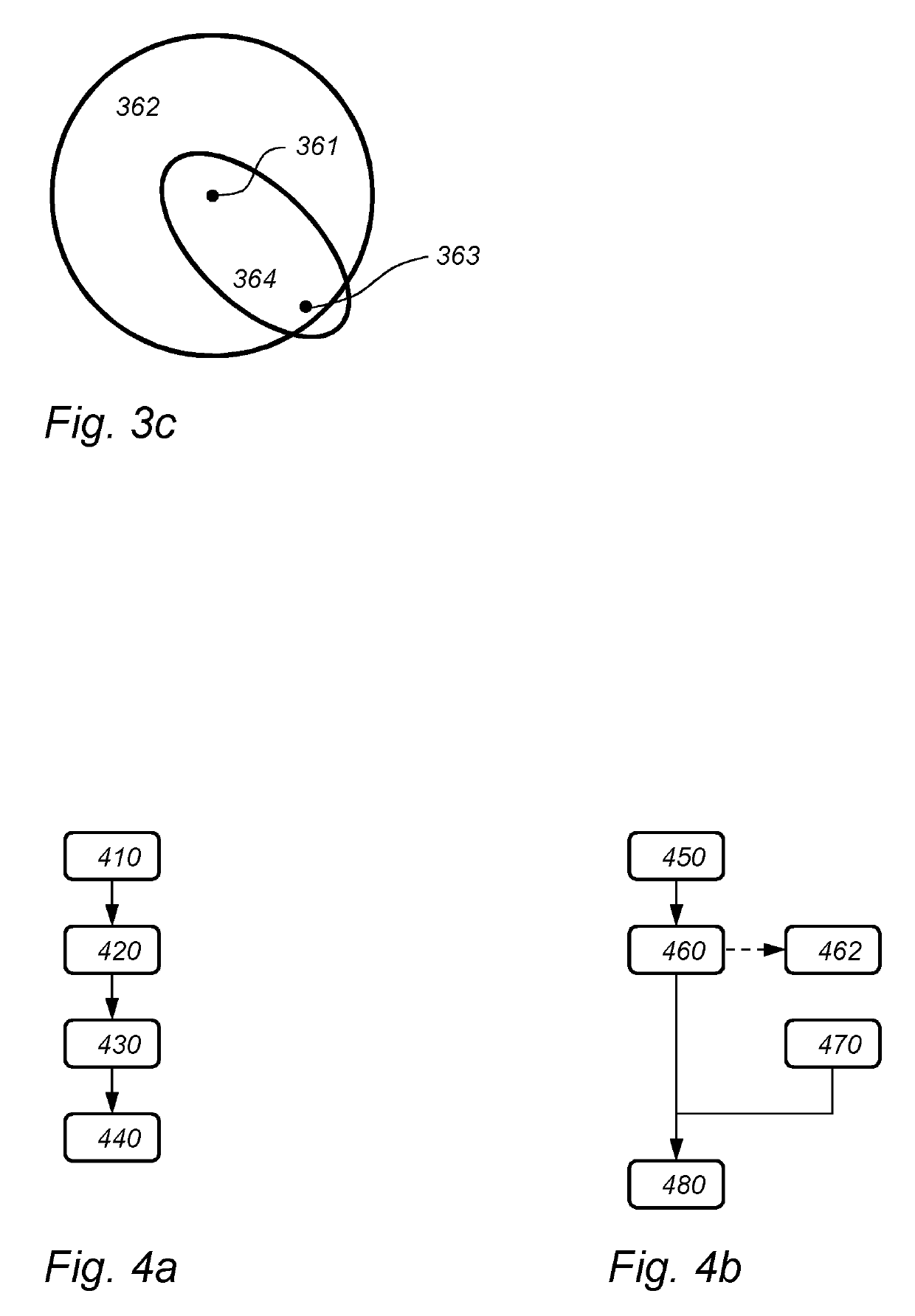Soft generation of biometric candidates and references based on empirical bit error probability
a biometric candidate and probability technology, applied in the field of biometric verification devices and biometric enrollment devices, can solve the problems of affecting the strength of the system, affecting the conversion rate of code, and affecting the success rate of biometric data,
- Summary
- Abstract
- Description
- Claims
- Application Information
AI Technical Summary
Benefits of technology
Problems solved by technology
Method used
Image
Examples
Embodiment Construction
[0045]While this invention is susceptible of embodiment in many different forms, there is shown in the drawings and will herein be described in detail one or more specific embodiments, with the understanding that the present disclosure is to be considered as exemplary of the principles of the invention and not intended to limit the invention to the specific embodiments shown and described.
[0046]FIG. 1a is a schematic block diagram of a biometric verification device 100. Biometric verification device 100 is part of a biometric system that comprises a biometric enrollment device in addition to biometric verification device 100. Verification and enrollment devices may be combined into a single device.
[0047]Biometric verification device 100 is arranged to match a verification bit string that has been obtained from a biometric during a verification phase with a reference hash that was derived from the same biometric during an earlier enrollment phase by the biometric enrollment device.
[0...
PUM
 Login to View More
Login to View More Abstract
Description
Claims
Application Information
 Login to View More
Login to View More - R&D
- Intellectual Property
- Life Sciences
- Materials
- Tech Scout
- Unparalleled Data Quality
- Higher Quality Content
- 60% Fewer Hallucinations
Browse by: Latest US Patents, China's latest patents, Technical Efficacy Thesaurus, Application Domain, Technology Topic, Popular Technical Reports.
© 2025 PatSnap. All rights reserved.Legal|Privacy policy|Modern Slavery Act Transparency Statement|Sitemap|About US| Contact US: help@patsnap.com



